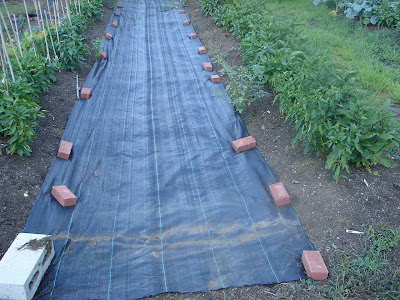
Rista Chili ready to be dried

Dried Rista and Hot Portugal Chili

Chili Powder
Early fall is one of my favorite times of year at One Love Farm. The cool weather means fall beets are ready and cold weather crops like radishes, lettuce and arugula thrive. It also means hot peppers (chilis) are ready to pick.
We grow several kinds of chilis and sell them at the market. But we also grow lots of chilis to dry and make chili powder. I posted some pictures above showing the major steps in making chili powder. First, we pick the peppers. At One Love Farm we use Cayenne, Hot Mexican, Hot Portugal, Rista and Pablano in our chili powder. For the adventurous (read crazy) we also make a limited amount of chili powder using Habanero! Next, we dry the peppers in a dehydrator. If you're thinking of drying chilis, you can do so by hanging them in a cool, dry place or placing them on a cookie sheet and putting them in the oven on its lowest setting.
Once dry, we crush the chilis in a blender. Last, we make a spice mixture of smoked paprika and other organic herbs like parsley, cumin and oregano and add it to the crushed chilis to make the powder.
We add more or less chilis to change the flavor profile and heat of the chili powder, but any way you like it has a smokey and spicy flavor that is great on anything. We add it to olive oil for salad dressing or marinade, put it in soups and sauces and even have it with omelettes. We also make a chocolate truffle with chili powder that is very popular, if unusual. Since I only use chilis that I grow myself, we make less than 100 bottles of chili powder a year and always sell out.
Luckily, I always keep some back for us at the farm and to send to my family at the holidays. My father was in town last weekend and he was sure to remind me before he left that he was getting low on One Love Farm chili powder!

















































